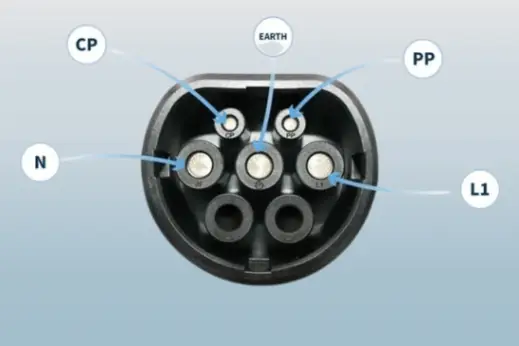Three Phase Vs. Single Phase EV Charging: How to choose?
Let’s start with understanding on what is single phase and three phase EV charging for Electric Vehicles.


Single-Phase EV Charging
Single-Phase EV charging is a process where electrical power flows through a single conductor(wire) to charge a battery.
Voltage: Single-phase EV charging usually happens with a regular home wall socket that has a power level of about 110 to 240 volts, depending on where you are located.
Current: It provides a single alternating current (AC) waveform.
Charging Speed: Single-phase EV charging is slower than three-phase charging. It is suitable for charging slowly i.e. overnight charging.
Most homes and businesses already have a type of electrical infrastructure called single-phase. This makes it easier and cheaper to set it up.
Three-Phase Charging
Three-phase charging is a process where electrical power flows through three conductors (wires) to charge a battery.
Voltage: Three-phase charging uses a stronger electrical system; typically 400 volts to charge the EV quickly.
Current: It uses three alternating currents with a 120-degree phase difference between them, providing a more stable power supply.
Charging Speed: Three-phase EV charging is much faster than single-phase charging. This makes it great for quick charging stations, business use, and fast-charging electric vehicles.
Equipment: Installing three-phase charging infrastructure can be more costly and needs specific electrical connections that are usually seen in commercial and industrial places.
The decision on whether to use single-phase or three-phase charging depends upon what you need.

EV charging over-night is usually done using single-phase charging stations. This is because single-phase EV charging is enough for overnight charging, and most houses have single-phase electrical service. Hence single phase charging of EV can be done easily without any additional electrical installations.
Public charging stations, specifically ones designed for fast-charging; often use three-phase charging to provide more power and make the charging process faster. Some additional electrical infrastructure investment may be required if three phase connection is not already available or increase in load might also be needed which leads to higher fixed costs.
EV Type: The kind of electric vehicle you own is important too. There are EVs that can use three-phase charging and others that can only do single-phase charging.
To put it simply; deciding between single-phase and three-phase EV charging depends on what kind of charging you require, the setup you have available, and the abilities of your electric vehicle. Single-phase EV charging is mostly used in homes, while three-phase charging is preferred for public and fast-charging stations.
Get in touch with PM Electronics today to get the best in quality rugged and safe chargers with the best after sales service support in the industry!!
